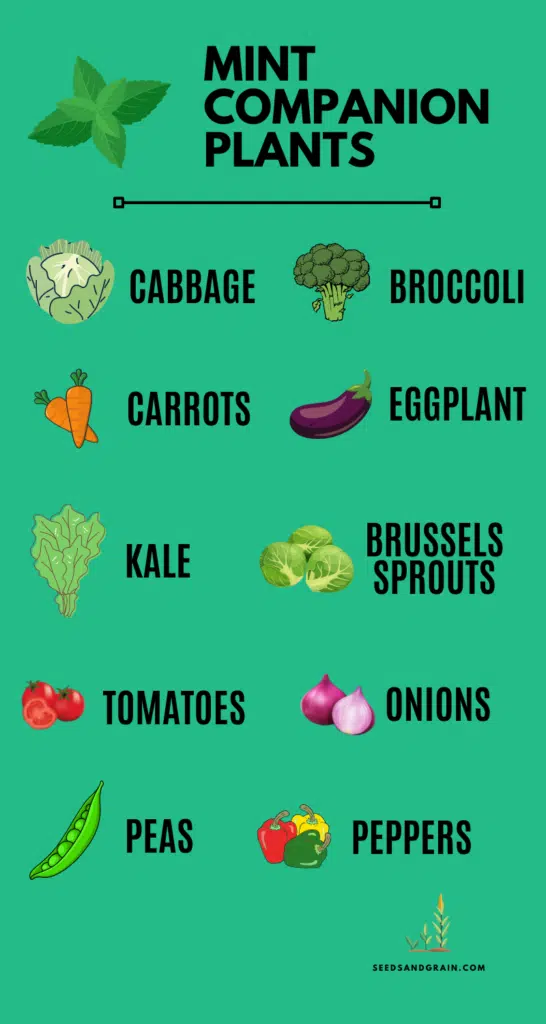Mint can be a great addition to your herb garden, and it’s an interesting plant in its own right. Because it’s considered invasive, it can be a much more challenging companion plant to stay on top of.
Mint can grow from one small plant to a traveling vine if not controlled. So it’s important to know which plants do well with mint, and which you should keep it away from.
As long as they’re watered properly, Mint plants are happy in full sun, but they also do well in partial shade.
Common Problems & Pests That Impact Mint
Before we decide what to plant with mint, let’s take a look at the common problems mint encounters.
Spider Mites
Spider mites are a common problem with mint and other herbs. They start off small and hard to detect, but by the time you notice the problem they’ve created a whole ecosystem and your plant might not make it.
Spider mites are tiny little bugs that eat away at your plants. You’ll know you have them when the plant leaves start to look like they have cobwebs all over. The leaves might start showing signs of curling or turning brown, and the plant can die if these aren’t taken care of.
While neem oil can help with a lot of pests, companion planting some mint nearby can also be effective.
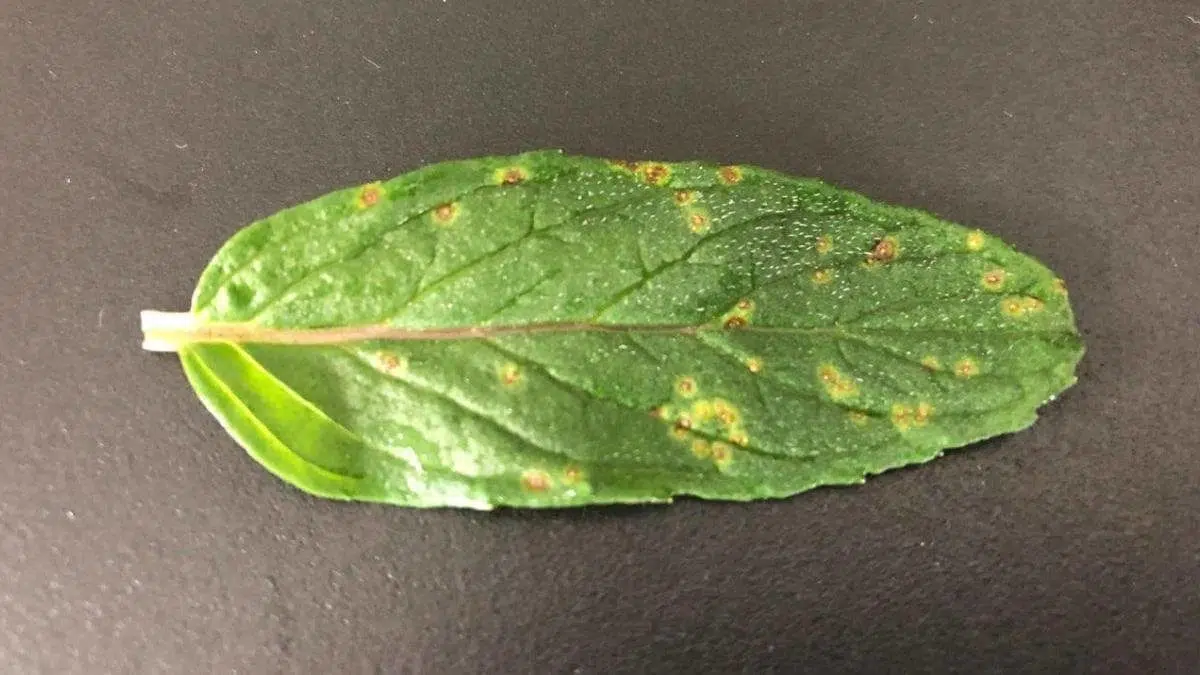
Mint Rust and Powdery Mildew
Mint rust is a fungus that causes your mint leaves to turn yellow. They’ll also fall off if left untreated, leaving bare stems and branches behind. You can control mint rust by spraying your mint with an anti-fungal spray like neem oil or grapefruit seed extract.
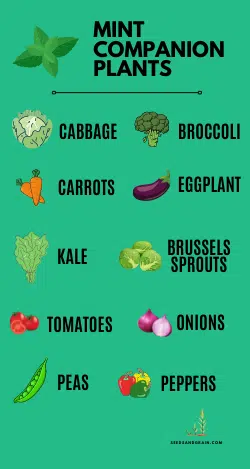
The Best Mint Companion Plants
While companion planting can help you have a great mint harvest, don’t forget it works both ways. So the plants you grow near your mint can benefit too!
1. Beans
Beans, as well as bush beans, are great mint companions. Mice, voles, and other garden rodents love snacking on beans and peas. The scent of mint helps deter some of these critters from getting a full meal in.
2. Cabbage & Broccoli
Cabbage and broccoli are great companions for mint. The peppermint scent can help keep away cabbage moths and flea beetles.
Cabbage moths are particularly tricky for brassicas like broccoli and cauliflower. They lay eggs on the underside of the leaves which are hard for humans to see.
Before you know it, there are giant holes in your cabbage leaves and the plant is struggling to survive.
3. Brussels Sprouts
Similar to others on this list, the aromatic scent of mint can help keep pesky beetles and other insects that feed on Brussels Sprouts away.
4. Carrots
Mint is considered a great companion plant for carrots because they help deter the carrot root fly. Carrot flies can be disastrous to your carrot crop, so having some mint close by can help.
5. Cauliflower
Similar to cabbage and broccoli, interspersing some mint plants near cauliflower can help with flea beetles. The beetles will chew holes into your cauliflower heads which can shock the plant if not remedied.
6. Eggplant
Eggplant can suffer from aphid attacks, and mint does a great job at keeping them at bay. Growing mint between your eggplant and tomatoes can help both varieties.
7. Kale
Grow mint near kale to help keep beetles and other insects from each your beautiful green kale leaves.
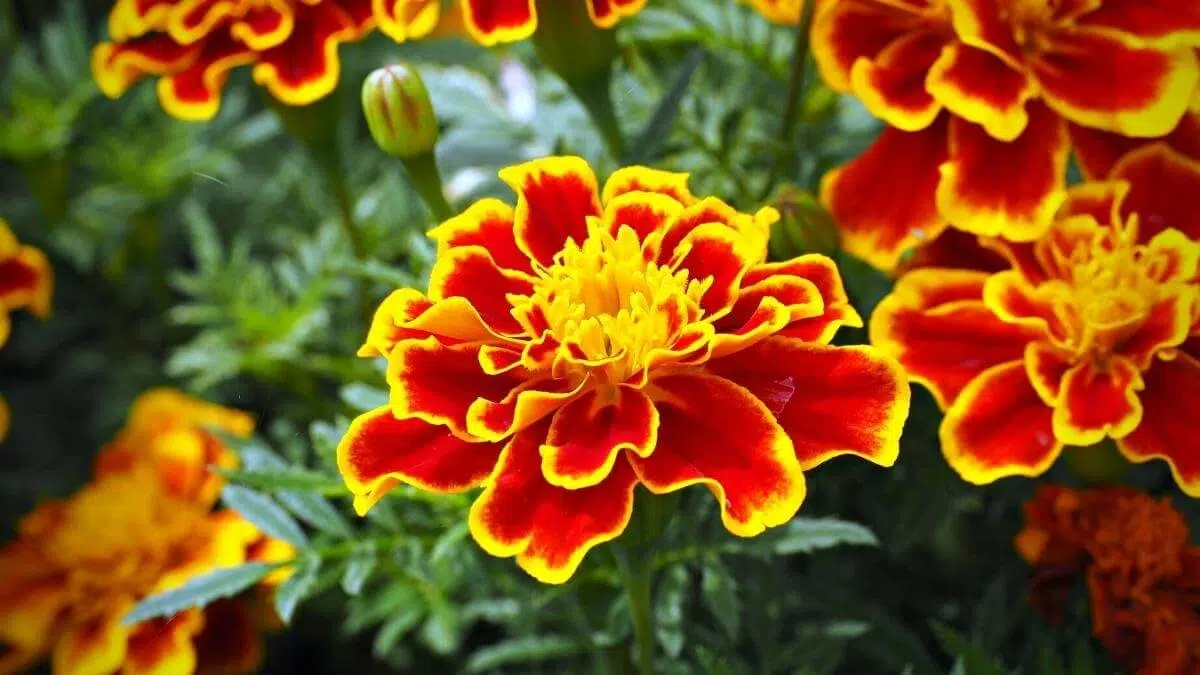
8. Marigolds
Mint and marigolds grow well together because they often serve similar purposes in the garden. They both can help repel certain pests with their scent, as well as attracting beneficial insects to your garden beds.
These two are great companions for tomatoes and other nightshades. If you were looking for a flower to plant with your mint, this is a good option.
Related: 7 Reasons to Plant Marigolds & Tomatoes Together: The BEST Companions?
9. Onions
The strong smell of mint can also help deter onion flies from wreaking havoc on your onion crop. While onions have a strong smell, the mint can counteract this and help keep flies away.
10. Peas
Peas and mint are good companion plants. The mint plant helps control pests and rodents because of its scent. If you can plant mint around your pea plants, you’ll be able to bring more fresh pods out from the garden.
11. Bell Peppers
You can plant mint with bell peppers, as it will help repel aphids. I found a ton of aphids on my pepper plants this past season, so I’ll definitely be adding some mint nearby to keep them at bay.
12. Strawberries (Kind Of)
Strawberries get a good amount of benefits from growing near mint, they even taste great together! But there is a catch.
Both strawberry plants and mint plants like to spread out a lot, and mint will usually end up winning the battle. One alternative is to put mint in a pot near your strawberry patch so it can help repel certain pests, but not ruin your strawberries.
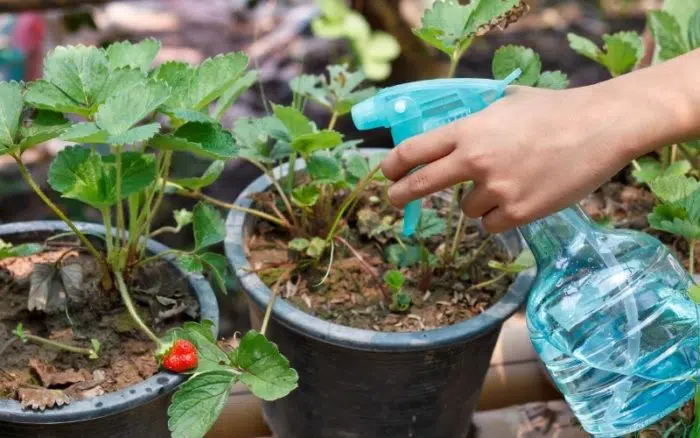
13. Tomatoes
Tomatoes are good mint companion plants as the peppermint smell can help deter aphids. Aside from tomato hornworms, aphids can be one of the biggest pest issues your tomato crops might encounter.
If you let some mint go to seed and grow flowers, those mint flowers attracts beneficial insects like bees, parasitic wasps, and more.
What NOT to Plant Near Mint
While a lot of plants benefit from being planted nearby mint, other crops don’t play well together.
Mint likes water, like a LOT of water, and moist soil, so it will likely steal the water these others herbs would need to survive.
Since mint grows as an invasive plant, it can take over other garden plants (i.e. choke out other plants) if you’re not careful. Being a hardy perennial and vigorous grower also means mint is a great ground cover between taller plants in the garden.
If you’re growing herbs in pots or containers, keep mint in its separate pot. Just like older kids, they like to have their own room or else things get weird.
What is Companion Planting?
Companion planting in my eyes is figuring out which plants and herbs to put near each other in the garden (and which to keep far apart) based on the insects they attract, as well as the soil conditions they promote.
A plant that generally grows well in sandy soil won’t do as well next to a plant that needs a ton of nutrients and good potting soil. Some plants in the garden like extra sunlight, while some do well with some shade.
What Are the Benefits of Companion Planting?
Organic Pest Control
Companion planting is a good way to control garden pests in an organic way. By planting an herb that repels asparagus beetles, a common hindrance to asparagus plants, you’re able to better control that beetle population and have a more bountiful asparagus harvest.
Attracting Beneficial Insects
Mint helps attract beneficial insects and pollinators, such as bees and butterflies to your garden. These can help companion plants grow larger and stronger.
Impacting Flavors
This can be both a pro and a con for companion planting. While mint can help tomatoes, peppers, and potatoes taste better, it can choke out other plants because it’s so invasive in its growing habits.
So you’ll want to keep this in mind when deciding what to plant nearby and what grows well together in your vegetable and herb garden.
What Grows Well With Mint?
Mint grows well with other herbs, and a wide variety of fruits and vegetables. However, you want to keep in mind that mint spreads like wildfire, so you want to make sure it doesn’t overtake other plants throughout the season.
What to Plant With Mint in a Container
When growing mint in a container, it might be worthwhile to keep it by itself. Mint loves to be ignored and underwatered, while most other plants need more water and attention.
Will Mint Choke Out Other Plants?
Mint has a vigorous rhizome, or stem that grows underground and can spread out in any direction in search of water and nutrients. This means it can grow around other plants roots and eventually choke them out.
Since the stem is underground, it can be hard to tell which direction it’s moving in, even for the most experienced gardeners. This is often why people will grow mint by itself in pots and containers to be able to keep it in check.
Companion Planting With Mint
Companion planting mint can be a great way to help your other plants thrive, while also getting a more bountiful mint harvest out of your growing season.
Mint is an interesting plant in its own right. Because it’s considered invasive, it can be a much more challenging companion plant to stay on top of.
Mint is happy in full sun as long as it’s watered properly but often will prefer partial shade as well.
